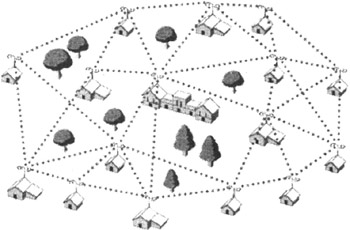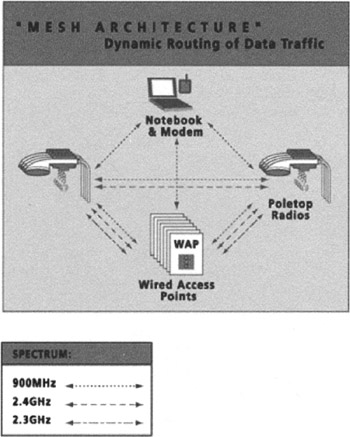5 A simplified solution
5 A simplified solution
It is clear that the mobility of the nodes causes a complexity increase at routing level. Thence arises the idea (at first sight contradictory with the initial idea) to conceive a mesh whose nodes are fixed! The difficulty is then to know what realistic usage corresponds to this scenario. Two commercial applications give us some indication:
-
The first comes from Nokia-Rooftop, originally a start-up spun off from work financed by Darpa, which is now part of Nokia. It is an alternative solution to the wireless local loop, in which the constraint of visibility between the user and the access point to fix the network is slackened: the various users each have a modem/router on the roof of their home (where from the name of the product) and they constitute a mesh network where each node acts as a router for his neighbours towards the access points to the fixed network.
-
In the preceding example nodes do not have mobility any more; the second example presented introduced mobility of the users, but the users are no longer the nodes of the Ad-Hoc network. The Ricochet system (developed initially by the Metricom company, which has since gone bankrupt, but the network was repurchased) is a micro-cellular system in which the base stations form a mesh network (they are boxes fixed on pole tops in streets ); a user is connected to one of these nodes with another radio interface that is used to connect the nodes, or the same interface in a different frequency band as shown in the following figure.

Figure 15.4: The Rooftop concept (ref. 1)

Figure 15.5: The Richotet system
EAN: 2147483647
Pages: 191